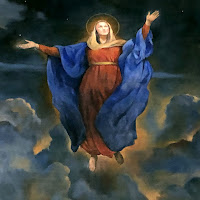The author was Honorius Augustodunensis. The surname has been questioned. Some thought he was from Autun, whose Latin name was Augustodunum, but he was as likely to be from St. Augustine's Abbey in Canterbury (where he would have known Anselm). Additionally, since he refers to contemporary events in Germany, some suggest that he could be from Augst near Basle or even Augsburg in Swabia. The Catholic Encyclopedia calls him "Honorius of Autun," despite acknowledging the German connections.
He was influenced by the writings of John Scotus Eriugena and his Division of Nature, and by Anselm of Canterbury. In fact, we can partially date its origin in the late 11th century because it refers to Anselm's Cur Deus Homo, published in 1098.
He was a monk (or hermit: he describes himself as solitarius which could mean either) who certainly spent some time in England; later in life he went to the Scots Monastery in Regensburg, Bavaria, lending credence to the idea that he was originally German.
Honorius also imitated the style of John Scotus Eriugena, used the same definition of philosophy as Eriugena ("Philosophy is the comprehension of things visible and invisible"), wrote a summary of the first four books of Eriugena's) Division of Nature (and copied the fifth into it), and praised him highly, suggesting that he may have spent time in Ireland with the man.
Besides the Elucidarium, he wrote many other works. We believe the Elucidarium was one of his first, which means he was a very young man when he wrote it. He lived until about 1140, and his birth is estimated to have been about 1080.
He wrote a set of lessons for celebrating the Assumption of Mary, a commentary on the Psalms, a collection of his sermons (you can read one here), a commentary on the Timæus of Plato, a bibliography of Christian authors (including himself of course), and Imago Mundi ("Image of the World") that combined cosmology, geography, and a history of the world.
Tomorrow we will look at the influential Elucidarium.


